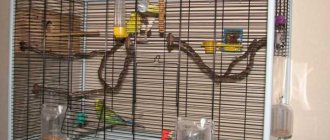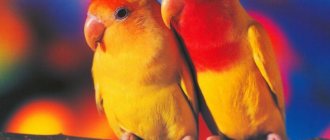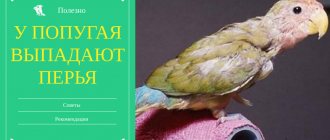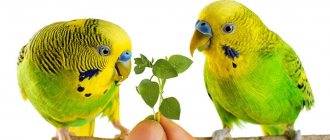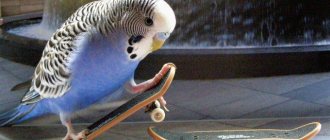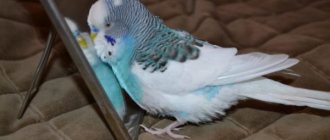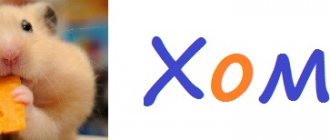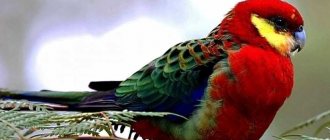Parrots are the most interesting, inquisitive and positive birds ever domesticated by humans.
Even living in captivity, these representatives of the bird family are happy with their life in a cage and pass on their positivity to their owners. Parrots are very playful and curious birds. They love a variety of shiny and bright objects and get along easily with other pets. To create a more comfortable and interesting life, make a playground for parrots with your own hands. You can easily place it in a cage and put various ladders, perches, swings, and exercise equipment there. Your feathered friend will appreciate these gifts and will lift your spirits with his actions.
Types of toys for parrots
Homemade toys are always better than store-bought ones. You never know for sure what materials they are made of and what effect they will have on your parrot's health. Making toys yourself is quite simple and inexpensive, and you will definitely know that they will not harm your pet.
Before making toys, you need to consider that parrots are incredibly smart birds and require a wide variety of toys. To live a full life, your friend needs the following types of toys:
- Developmental. They should be aimed at developing the bird’s mental abilities and helping it achieve high results.
- Exercise equipment. To prevent your pet from suffering from obesity, physical activity is vital. They will relieve him of excess weight and contribute to a long and cheerful life.
- Gnawing. Nature has awarded parrots with a sharp and strong beak, which must always be in use. These toys will allow you to redirect the parrot's attention, and he will gnaw on them and not your furniture.
- Motivating. Parrots are very smart and curious. Such toys will attract the bird's attention and give it the opportunity to show its individual abilities.
Cage design
CDs
A budgie cage should be bright, shiny and modern. Old CDs meet all these requirements. They can be hung, if the volume of the home allows, or mounted on the walls. In the second case, they will also save you from unnecessary cleaning by trapping debris inside.
Rattles
What could be brighter and louder than toys for the littlest people?! Children grow quickly, and their rattles can be given to the parrot. They are safe and interesting in every way for intelligent birds.
Training a bird to play
Parrots are not only inquisitive birds, but also very shy. They are often afraid of everything new, and they have to make efforts to accustom them to this or that toy.
To accustom a parrot to a toy, you need the following:
- Gradually introduce your feathered friend to new entertainment. This will help avoid severe fright and will not cause hostility.
- When the bird touches or simply approaches a new toy, reward it and give it some kind of treat.
- Everyone knows that parrots are excellent imitators. Once they see the toy in your hands, they will no longer be afraid of it, and the training process will become much easier.
- Like people, parrots have their own personalities and preferences. To please him completely, keep track of what subjects he shows increased interest in, and make toys based on them.
Why do my parrots need toys?
Parrots love attention and prefer active pastime. However, it is impossible to be with your pet all day long. Left alone, he begins to look for entertainment on his own. Parrot toys will help your pet have an interesting time.
Owners of birds who want their bird not only to have fun, but also to develop, offer their parrot various games. The most popular among them are:
- Intelligent - the bird can assemble parts into a pyramid, put a coin into a box with a slot, and search for a hidden owner.
- Sports are tug of war, ball manipulation, rope ladder climbing.
- Entertaining - imitation by the owner of the behavior or chirping of a bird, copying by a pet of a simple song or human speech.
Suitable materials
The safest materials for budgies and other parrots are natural ingredients. As a rule, they can be easily found in any park or garden and used in making toys.
One of your friend's favorite items will be pine cones . Parrots love to chew them and roll them around the cage. For greater convenience, you can attach the pine cone to the side wall or hang it from the ceiling of the cage. When letting the bird out for a walk, you can make a garland of pine cones and attach it in the form of a swing. Your pet will never miss this kind of entertainment.
A good material for a toy would be a thin branch of a raft tree. You can collect a bunch of them and secure it in a cage. With its help, the parrot will clean its beak or simply play with it.
DIY toys
The need to acquire new fun will push you to be creative and do everything yourself. Active pichugas are very fond of homemade products for games, and you will be sure exactly what it is made of. The question arose, how to do it yourself? Don't worry, there's nothing complicated.
For example, make a ladder from wooden blocks and a simple cord. The planks must be made of suitable wood. Rough branches will do. The parrot will easily climb on such a surface, develop physically, and will be happy to repeat the exercise. He will not pay attention to the smooth ladder, as his paws will slide a lot.
Elementary fun - a bump. You can simply place it on the bottom of the cage, hang it on a wire, or on the side of the wall. A pine cone will definitely arouse your pet's interest. The parrot himself will suggest the option for making the craft. Take a closer look at what the new family member likes.
A rich, healthy pastime for your pet depends on us.
Swing
Climbing and swinging are just a pleasure for your pet. You will see how your active pet performs acrobatic tricks. The swing is suitable for small and large breeds. They come in the form of wooden poles, a hanging ring or a rope.
Bells
Surely your pet started chirping early in the morning, singing along with the birds outside the window. They are terrible music lovers. The bell is an important game. The bird will ring, twist, twitch, trying to make more sounds.
Ladders
No cage for an active parrot is complete without this accessory. Active creatures love to climb them, at the same time maintaining their physical fitness. A diverse range of pet stores offers a choice from classic to complex ladder designs.
Rattles
Curious creatures love this kind of fun. The bird is attracted by the brightness of the toy and the musical chime they make. Rattles are easy to pick up with your paw or beak. The parrot will throw from a height and roll along the floor. Why not physical development?
Sports toys
A small category intended for large pets. These are rollerblades, bicycles, skateboards, basketball courts. Such trinkets help large birds develop physically. They need to be taught how to use them.
Others
Toy carts, beads, rings, balls, mirrors are a small part of what can be purchased for a bird as toys. Thanks to indoor activities, the parrot will find many interesting activities to do while remaining active and physically healthy.
Toys using mirrors
Making “mirror” toys for your cockatiel with your own hands is not at all difficult. The same is true for other types of parrots, only the personal preferences of the bird must be taken into account.
Like many people, parrots love to look at their reflection in the mirror and even talk to it. If you have several birds, then toys with a mirror will not suit them. The fact is that they have enough constant communication with living birds, and they will be indifferent to their reflection.
A powder compact mirror is quite suitable for installation in a cage. It is securely attached to the wall of the cage and a structure of beads strung on wire is tied around the edges.
Beautiful swing
You will need:
- multi-colored beads;
- metal bell;
- ready swing.
How to make a beautiful swing
- Choose multi-colored beads. You can use buttons. Remove the swing and disconnect the wire at the top.
- String the beads on the wire, remembering to leave a small gap between them so that the parrot will find it interesting to move them.
- Fasten the ends of the wire and hang a bell at the junction.
- Hang a beautiful swing in your budgie cage.
Artificial friend
Parrots are very sociable creatures. If you have only one bird, then she definitely needs an object with which she can “talk”. It can be a mask or a toy parrot, which is easy to find in any pet store. They can be made of various materials (plastic, wood, etc.) and have a variety of sizes. When purchasing a wooden “friend,” make sure that the parrot’s wood is not painted with varnish or any other similar product. If you take a plastic bird, check if there are any traces of glue left on the toy.
If you have certain skills in needlework, then you can sew such a toy yourself. This craft will be environmentally friendly and will definitely not harm your pet.
Video “Common fun for parrots”
This video will demonstrate what trinkets you can buy for your pet.
Sorry, there are no surveys available at this time.
Was this article helpful?
Thank you for your opinion!
The article was useful. Please share the information with your friends.
Yes (100.00%)
No
X
Please write what is wrong and leave recommendations on the article
Cancel reply
Rate the benefit of the article: Rate the author ( 7 votes, average: 4.14 out of 5)
Discuss the article:
Making a ladder
For a parrot of any species, there is nothing more interesting than going up and down stairs. They are sold in huge quantities and variety in all pet stores, but the most correct thing would be to make a ladder with your own hands. To do this you need to do the following:
- Take several sticks of the same size. Under no circumstances use branches of bird cherry, poplar, pear, or oak.
- Cut notches along the edges of the sticks.
- Sand the sticks to a smooth surface.
- Tie a ladder from rope or elastic and attach it to the cage.
Willow gnaws
You can make very useful toys from willow twigs for parrots with your own hands by collecting raw materials somewhere outside the city on the banks of reservoirs. Before you begin, soak the willow branches in boiling water. By doing this, you will not only give the tree greater flexibility, but also protect your parrots from infections and unnecessary microbes.
- Weave balls from the branches and hang them with wire from the roof of the cage. The result was original toys and necessary chews. Birds not only sharpen their beaks on wood, but also replenish their supply of useful vitamins.
- You can go further and make an original swing from willow sticks, attaching them to a ball with metal chains, and hanging a bell to complete the feeling.
How to create a simulator
The easiest way to make a simulator for your pet will be using a plastic bottle and wooden sticks.
The process of creating a simulator consists of the following steps:
- We cut a tube-shaped blank from the bottle, leaving the bottom.
- We drill holes in the bottle and insert wooden sticks into them.
- Fill the bottle with washed and calcined sand.
Such a simulator will help the bird lose weight and help maintain its health for many years.
Toys for budgies
Toys for a budgie should be bright, colorful, and noisy. For a budgerigar, the usual state is a state of complete madness: when everything creaks, staggers, and almost falls.
Therefore, an excellent solution for a budgie would be a huge number of bells, all kinds of rings, ladders and beads. You can use baby rattles, or Kinder surprise boxes filled with grains. The latter are especially interesting, because the bird will occupy more than one day - it will notice something noisy inside and will diligently try to get it. The owner should be prepared for this “noisemaker” to constantly fall and tap its beak on the plastic of the yellow cylinder.
Wavys are extremely fond of making noise with beads from the caps of plastic bottles.
Playgrounds for budgies are characterized by an abundance of toys, which are dropped and thrown during play. The peak of fun will be if they make a loud sound. Throwing objects include cubes, shells, and bottle caps. Everything that the bird will like.
Placing toys in a cage
After making or purchasing toys, they need to be placed correctly in the cage. Under no circumstances should the house be filled to capacity. The parrot should have as much free space as possible. It will be enough to place a bait and a few small toys. All of them need to be attached to the walls of the cage and the middle of the house should be left free. You can place a feeder and a bath in it.
All other toys should be placed outside the cage and create a play area for your pet. It will be enough for him to play with them during walks.
How to make a parrot scraper
The natural feeding behavior of winged birds is to rummage in the ground for hours. They sort through roots, grass, seeds, and fallen fruits. They eat and develop physically at the same time. You can make a duster for your pet. The parrot will scurry around, get food for itself with its beak.
Making a “dry feeder” is easy. Take a bowl with deep sides; a tray or tray will do. High walls will help keep the contents from scattering throughout the cage. The beak of an active bird will scatter everything. Place it on the bottom of the cage, your pet will fuss around in it until he gets tired of it.
Any plant debris will become filler. Setting up a mower for an active Corela is very simple. Take tree bark, roots, dry leaves, flowers, berries, pine needles. Add flax seeds, dried fruit, carrots, chalk, any grain mixture that he can pick up with his beak.
For the health of an active pet, change the contents of the picker once a week and remove droppings every day. The feathered friend will remain physically active.
Next
TrainingParrot and cat, features of friendship
Safety regulations
When making toys with your own hands, it is important to know how not to harm your feathered friend. To do this, you should follow a few simple rules:
- Make all holes of such a diameter that the parrot's beak cannot get stuck in them. It would be ideal if the beak does not fit into them at all.
- Use less paint in your creations. This will protect the parrot from poisoning.
- Use only durable materials in your crafts. A parrot can chew and swallow a fragile product.
- Do not use materials that are toxic to the parrot: zinc, copper, brass, etc.
- Don't make rope out of cotton. When disheveled, they can enter the bird’s body and clog the stomach.
- For your products, use only branches and twigs of fruit trees. In other cases, there is a risk of poultry poisoning.
Parrots are cheerful and curious creatures. By enriching their lives with a variety of toys, you will make them healthier and happier. For this, parrots will diversify your life and help you become a little kinder and more cheerful.
Originally posted 2018-03-19 10:05:24.
Which ones should not be given?
For a budgerigar, like other species of these birds, you cannot buy painted toys. Small pieces of paint can enter the stomach, thereby causing poisoning.
Also, the accessories should not have holes in which the bird could get its beak stuck. It is better if the material used to make toys is durable, otherwise the parrot will be able to crumble it.
It is worth paying attention to the presence of sharp corners. During play, your pet may get hurt on them.
Important Tips
Having figured out how to play and communicate with a budgie, it is not enough to provide your pet with a variety of devices. Following these tips will help you care for your bird:
- It is better to purchase those toys that are intended specifically for “wavy children”;
- When making homemade toys, it is worth remembering that they must correspond to the size of the bird;
- a parrot needs variety, and therefore toys must be replaced periodically with others;
- the pet’s home should be as spacious as possible, and therefore you should not “clutter it up” with play equipment; it is better to make a play area;
- the safety of the pet when placing toys is paramount;
- play equipment must be washed and cleaned;
- broken items should be removed from the pet’s field of vision as quickly as possible.
When caring for your feathered friend, it is important to promote his physical and psychological comfort. Established contact will make the bird the owner’s best friend, with whom you can even have a heart-to-heart talk
Joint games will allow you to make friends and tame the bird so much that it will not accept anyone else as its owner.
Previous Caring for parrotsFeatures of the behavior of a budgie Next Caring for parrotsHarness for parrots: why is it needed and how to make it yourself
What should it be
Carrying, first of all, should be comfortable for the pet:
- the dimensions of the “temporary cage” for small and medium birds are approximately 44x25x25 cm;
- the arrangement should take into account the safety of the bird, it should not be injured on the walls;
- it is desirable that the house be as closed as possible from drafts and light;
- it is necessary to isolate the pet as much as possible, since a huge world filled with different sounds and flickering of unfamiliar objects is stressful for poultry;
- if the walls of the house are solid, ventilation is needed so that the bird does not suffocate;
- during a long journey, a bird may get hungry or thirsty, it may become bored and lonely - therefore, for long-term use, you need to install a drinking bowl and feeder, and put your favorite toy.
If the nearest pet store does not have a carrier that meets all the requirements, you can use an ordinary cardboard box as it.
This should be a food or office container that does not have any strong odors. You need to make ventilation holes in the upper part, and cover the bottom with thick fabric so that the paws do not slip on the cardboard. Important! Remember: parrots come from tropical countries; moving in cold weather is dangerous for them. If there is still a need for transportation, the temporary housing should be insulated as much as possible.
Why do you need entertainment for your poultry?
Buying toys for your feathered pet seems like a minor and optional activity, but it is not. There are several reasons to equip a cage with a play space:
- Don't let the bird get bored in the absence of its owner.
- Do not let the bird from idleness spoil the interior of the room.
- Relieve a newcomer from psychological discomfort and speed up his adaptation to a new place.
- Keep wild birds in good physical shape at home.
A parrot is a bird that needs company, communication, it loves to play pranks and have fun. Otherwise, the bird begins to get bored and develops some psychological problems that can lead to illness. For known reasons, owners cannot stay near the cage with their feathered pet around the clock.
The second reason is pranks. The budgerigar is a nimble, active bird capable of much. In just one evening outside the cage, he can tear off the wallpaper in the room, damage the wiring, climb into an outlet, or get tangled in the folds of curtains. The owners will not be able to monitor their pet every second. To prevent the wavy from being naughty in the room, they buy him toys.
The third reason is adaptation. As soon as the parrot gets into a new home, all the necessary conditions are created for it to quickly get used to the new environment.
It is important that at this time the bird not only eats and drinks enough, but also does not get bored. Bright toys will help dispel melancholy and get used to a new home
The fourth reason is obesity. Often, domestic parrots eat a lot and exercise little, which leads to health problems. Various swings and ladders will make your pet bird move more in a playful way. The parrot will not even understand that by jumping on ladders and playing with a ball, he burns off extra grams. Exercise toys are important for your budgie's health.
Why do you need a carrier for parrots?
A carrier is a temporary home for a bird in which it can feel comfortable during transportation. It would seem, why is it needed?
The cage, the permanent home of poultry, is usually of impressive size. These dimensions sometimes do not allow for transfer from one room to another. There is no need to talk about a long journey, for example, a train trip - it is completely inconvenient.
It would seem that a trained bird can be safely carried in your hands. What will prevent the owner from holding the pet in his hands during a trip to the clinic?
Yet, various circumstances can cause the bird to be injured, shocked, or even fly away. A carrier for a parrot will provide a “homely”, familiar environment and limit the movement of the bird, thereby depriving it of the opportunity to fly away. Mental and physical health will not be affected during transportation. But isn’t this all that a caring poultry farmer needs?
Requirements for toys
When arranging a cage, first of all you need to think about how to protect the bird from damage. Game items must be made of safe materials. Before purchasing entertainment devices, consider all the little things: color, smell, composition. Read the information on the label. Feel the product, check its strength. A good toy should be safe.
Plastic
The industry produces gaming items made of plastic of all kinds and sizes.
Most often, people buy plastic figurines for their pets: they are cheap, easy to clean, and do not change shape. Choose only certified products.
The hardness of the plastic is another indicator of quality. It's not easy to make a parrot toy that will last a long time. Fragile things will not withstand blows from the beak, and sharp chips will injure the bird. In addition, if a feathered pet swallows a piece of destroyed plastic, it can die. Regularly inspect the game equipment, replace destroyed items with new ones.
This is interesting: How Anna Mikhalkova Lost Weight
Metal
Parrots are sometimes capable of breaking even the most reliable toys: destroying the fastening, disassembling the chain into links. What is especially important is that the size of the metal parts must correspond to the size of the bird. You must not allow the foot to get stuck in the ring or carabiner. The parrot will not be able to free itself and, twitching, will dislocate or break a limb. And, of course, no zinc, copper, or brass parts - these materials are soft and pliable. If you chew such metal, you can get poisoned.
Ropes
Toys made from threads, twines, and ropes are very common among poultry farmers. Parrots happily sit on rope ladders, swing on swings, and ruffle various panicles with their beaks. It is preferable if the composition contains rigid natural fiber:
It is not advisable to use cotton ropes, as parrots swallow soft threads, fill their stomachs, and as a result feel unwell. It is also better to exclude synthetic ropes and swings. By fraying the artificial fiber and becoming entangled in it, the bird can suffocate. You should not allow your pet to play with a damaged item, especially without supervision.
Things to consider
Anyone can create a cage of optimal size on their own. To do this, you do not need to buy expensive tools or have specific work experience. In this case, the breeder independently decides what dimensions and other features the design will have.
If you plan to breed wavy birds, then it is advisable from the very beginning to make a large cage in which several pairs will be comfortable.
Requirements for a homemade design
Before starting work, it is recommended to study some of the requirements for it. They allow you to make a product in which parrots will feel safe and comfortable.
These requirements include:
- the dimensions of the structure depend on the number of birds that will live in the cage;
- The minimum requirement for one wavy is a cage with dimensions of 40x25x50 cm;
- if a couple is planning to live, a large structure is required;
- It is best to focus on a rectangular shape, since even with no experience it is quite easy to make basic products for it, and the cleaning process is also simplified;
- if a person has skills in working with different materials, then you can choose a cylinder shape that provides better visibility for the bird;
- first, a drawing is made according to which the main parts of the product are formed;
- inside the cage it is necessary to provide places for accessories, perches and other things the birds need;
- an optimal distance is left between the perches, allowing the bird to flap its wings without touching the main parts of the cage;
- for wavy animals, the distance between the rods of the cage should not exceed 1.5 cm, since if the holes are too large, the wavy animal can stick its head through and get stuck;
- the thickness of the cage rods depends on the size of the bird, so it is advisable that this parameter exceed 2 mm, otherwise even a wavy bird can chew through the wire;
- During operation, various sharp edges are formed, which must be properly concealed and hidden, otherwise they can cause significant harm not only to the pet, but also to humans.
Wavys happily gnaw on wooden parts, so if you plan to create perches from wood, then only hardwoods, which include oak or birch, are selected.
Selection of materials
Before starting work, it is recommended to make a drawing and also determine what materials the walls and ceiling, as well as the bottom of the cage, will be made of.
The floor is made solid, and it is also desirable to form a retractable part, represented by a tray, since such a device makes it easier to clean the product from dirt.
Only materials are selected that cannot harm the wavy. The standard choice is a mesh fabric and a fiberboard sheet, the thickness of which is 1.5 cm. A galvanized mesh is used to form the grid.
It is represented by a welded steel structure in which the wire has a thickness of 2 to 3 mm. Cells usually differ in size 10x25 mm. When choosing chipboard or plywood, it is taken into account that the thickness of the sheet should allow connecting parts of the structure using screws.
It is advisable to choose a sheet of chipboard with a thickness of 1 cm, and for a sliding tray choose plywood with a thickness of 0.5 cm. It is allowed to use used products obtained during the manufacture of various furniture.
To protect the room from the food that birds scatter while feeding, it is recommended to make a side at the bottom of the cage, its width starting from 10 cm. For this, inexpensive plastic is chosen, and it is desirable that it be transparent.
It is undesirable to make structures only from wood, because the material absorbs moisture and begins to deteriorate and rot over time, which can become dangerous for the parrot. Usually they resort to combined options.
Why parrots love mirrors
In the minds of many people, a parrot and a mirror are inextricably linked. The increased interest of these birds in mirrored surfaces was noticed long ago, which is why a mirror is often included in the set of accessories for a parrot’s cage.
The love of these birds for their reflection is easy to explain. In nature, parrots live in large flocks and constantly communicate with each other. In captivity, these birds are often kept alone, which contradicts their natural behavior. When alone, they experience stress, and without regular interaction with their relatives, they can get sick. In the mirror, the parrot sees its own reflection, which it mistakes for another bird. His intelligence is not sufficient to understand that in front of him is an object and not a living being. As a result, the pet begins to communicate and play with an imaginary friend and no longer feels lonely.
Recommendations
Toys with tiny parts should be avoided, unless they are made of wood, of course. Some parrot owners, considering the filling of soft toys dangerous, do not give them to their winged pets. In fact, even soft toys can be given to parrots to play with, but you just need to be careful: when the toy is torn and the inner filling comes out, the toy will need to be removed from the cage.
Young parrots really enjoy snuggling with a soft toy, perhaps because it reminds them of the brother or sister they grew up with in the nest.
If you want to keep your birds safe, don't buy anything that doesn't have a "Safe" label or logo on it.
